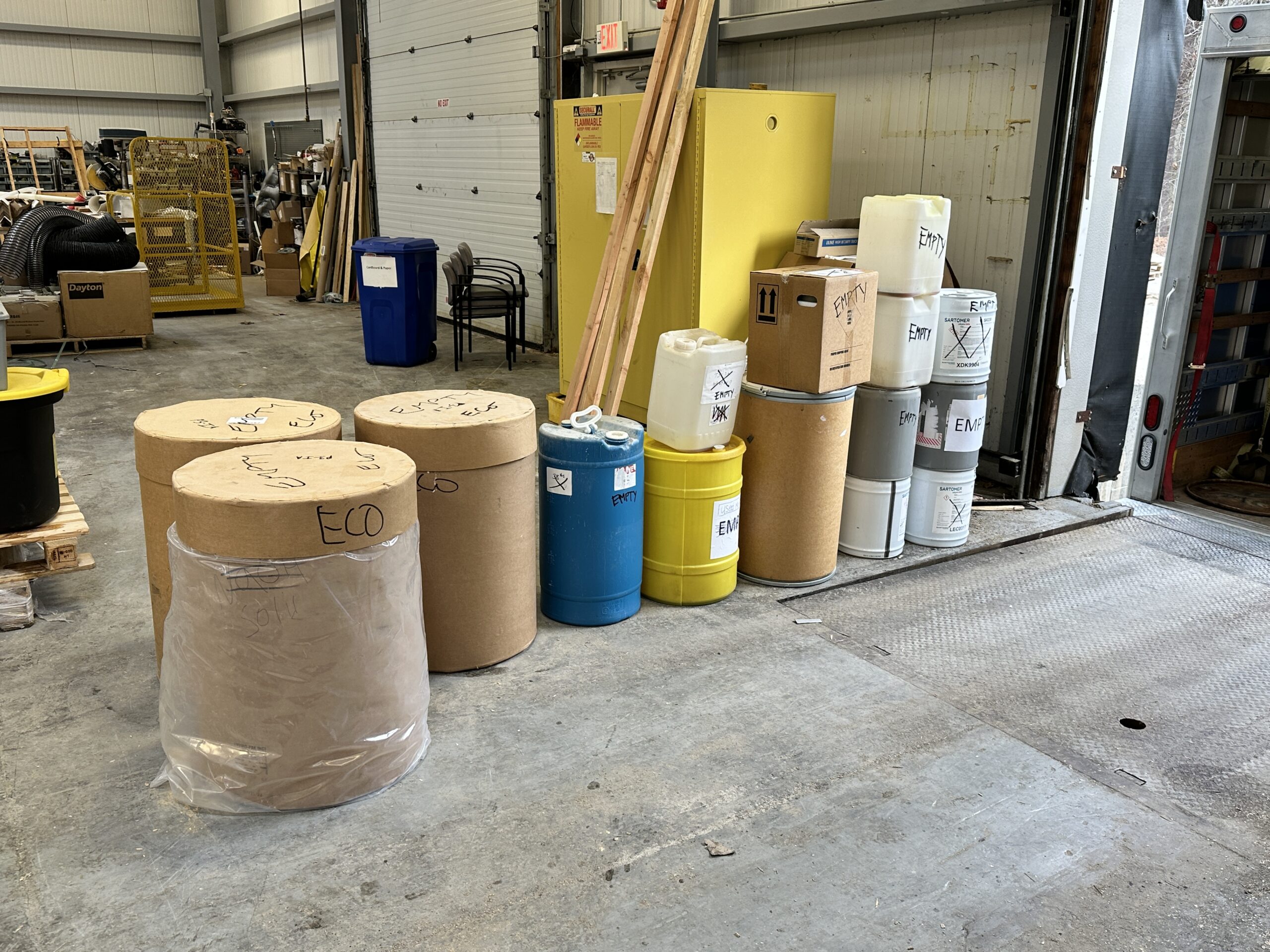
Understanding lab pack disposal safety requirements ensures the safe handling and transportation of hazardous waste to treatment facilities. Lab packing is used to safely collect, package, and dispose of small quantities of hazardous chemicals or materials, typically found in laboratories, schools, or research facilities. Following the safety requirements reduces the risk of accidents or exposure and protects human health and the environment and ensures compliance with regulatory standards, making the entire disposal process safer and more efficient.
What Are Lab Packs?
Lab packs are usually drum-shaped containers designed to transport numerous smaller containers of hazardous waste securely and safely. Lab pack containers run in size from 5 gallons to 66 gallons. They are intended to hold smaller packs of hazardous materials securely in place for better storage and organization, facilitating the safe transportation and eventual disposal of hazardous waste. Materials placed in lab packs range from acids, oxidizers, and solvents to aerosols, compressed gasses, and flammable chemicals, among other harmful substances.
Advantages of Lab Packs
Lab packs are a safe way to transport chemical waste that cannot be disposed of through conventional means due to environmental risks. Federal and state guidelines for lab packs guarantee the secure handling and elimination of such waste while accommodating exceptions for smaller shipments. This approach is cost-effective, safeguards public health and the environment, supports local communities, and helps organizations avoid penalties.
The Department of Transportation regulations about shipping hazardous wastes, as defined in the Hazardous Materials Table (HMT) 49 CFR 173.12, provide an exception for lab packing shipping requirements. The DOT’s exception is intended to streamline the shipping process for small quantities of hazardous waste. By offering a degree of ease and flexibility, the exemption makes it more manageable for companies to handle and transport hazardous waste while ensuring public safety and environmental protection.
Government Regulatory Oversight
The EPA is the federal authority that established regulations, rules, and guidelines for managing lab pack services through the Resource Recovery and Conservation Act (RCRA) and Land Disposal Restrictions (LDR) program. In addition to the EPA’s regulations, other government agencies such as DOT (as mentioned) and the Occupational Safety and Health Administration (OSHA) have established guidelines for handling, transporting, and treating lab-packed chemicals. These regulations collectively aim to minimize the risk of exposure to hazardous substances for workers and the general public. Maine also has several regulations that govern the disposal of lab pack waste, with the Department of Environmental Protection (DEP) responsible for permitting treatment, storage, and disposal facilities within the state.
The Process of Lab Packing
A licensed chemist must oversee the process of lab packing to ensure compliance with DOT shipping regulations. This involves identifying, categorizing, separating, and properly labeling each material according to its hazard class, packing group, and designated shipping name to guarantee safe and regulatory-compliant transportation.
The initial step is the identification process. This entails creating a detailed inventory of all damaged, outdated, used, or expired chemicals that require disposal. This inventory should categorize the contents of the lab pack and organize the materials. Identification must precede any disposal of unwanted chemicals to ensure a safe and controlled process.
Next, hazardous materials are carefully packaged under the supervision of a licensed chemist by filling small containers, such as vials, and then placing them within larger containers. To minimize risks, similar hazardous materials, including flammable substances, corrosives, and other potentially hazardous items, are separated and grouped together.
Labeling is based on the RCRA’s hazardous waste standardized coding system, which provides a common language for all parties involved in handling and transporting waste to classify and manage hazardous materials accurately. Waste codes are alpha-numeric, begin with the letter D, followed by three digits. Coding starts with D001 and ends at D043, with each code identifying one of four hazardous waste characteristics designated by its ignitability, corrosivity, reactivity, or toxicity. For example, the D001 waste code is for ignitable wastes, while the D002 signals hazardous waste with corrosive characteristics.
Ins and Outs of Combination Packaging
Combination packaging for hazardous waste lab packs is permitted only when the inner packaging consists of a container with a capacity of less than 1 gallon (4 L) of glass or 5 gallons (20 L) of metal or plastic. Liquids within the inner container must be surrounded by a chemically compatible absorbent material sufficient to absorb the liquid contents in case of leakage or spillage.
Contact the Experts at Maine Labpack
Lab packing has its own set of rules and regulations that must be strictly adhered to ensure safety and compliance. The entire lab packing process requires expertise in the laws governing hazardous waste management and the personnel doing the packing. If your laboratory, school, hospital, research or medical facility, or manufacturing company has unmanaged hazardous chemical waste, contact Maine Labpack. We offer exceptional lab pack disposal services and other sustainable waste management solutions to customers throughout New England. Our team will arrive at your site to properly sort, identify, categorize, separate, and package your chemical wastes for removal, transportation, and disposal to ensure facilities remain safe and compliant. To learn more about our lab pack disposal services, contact us today.
